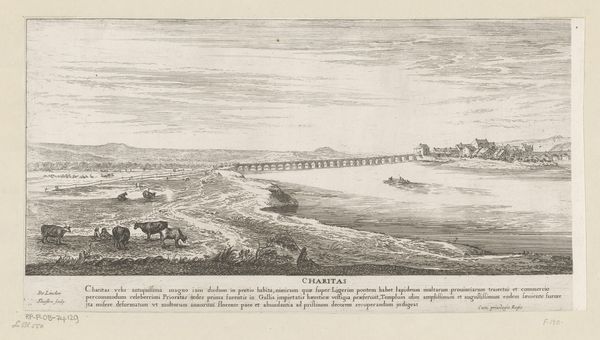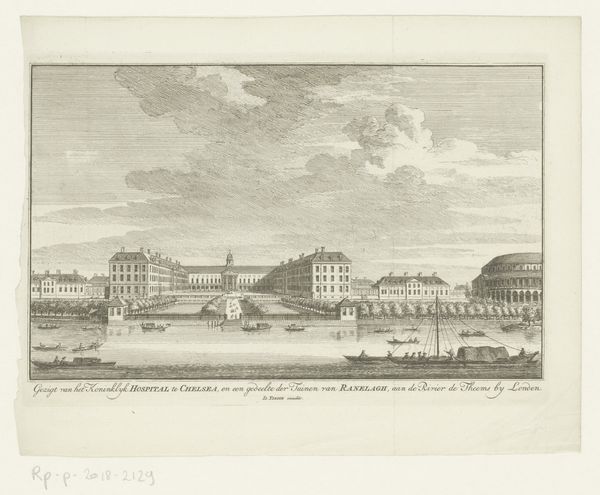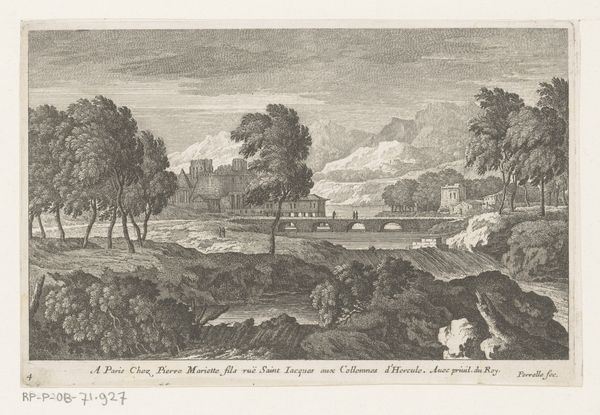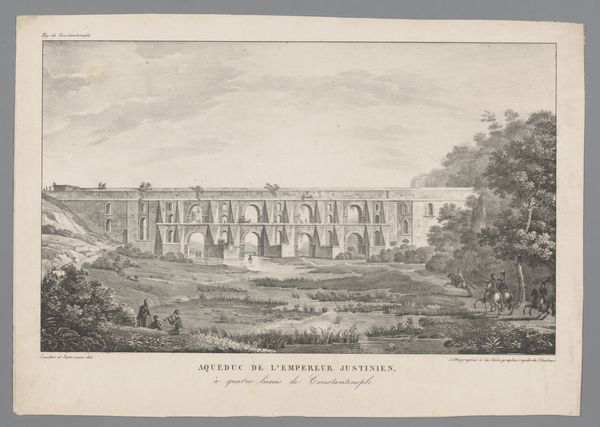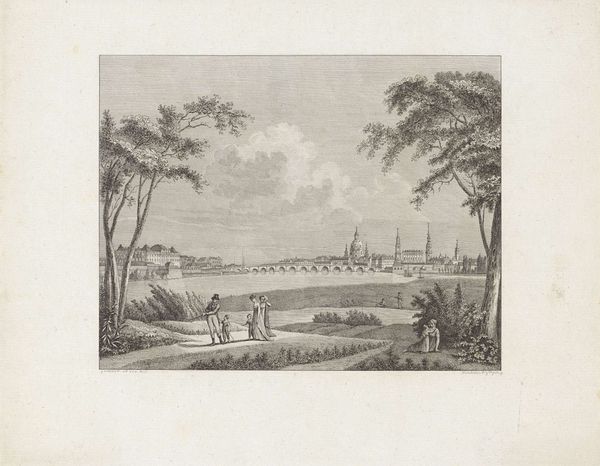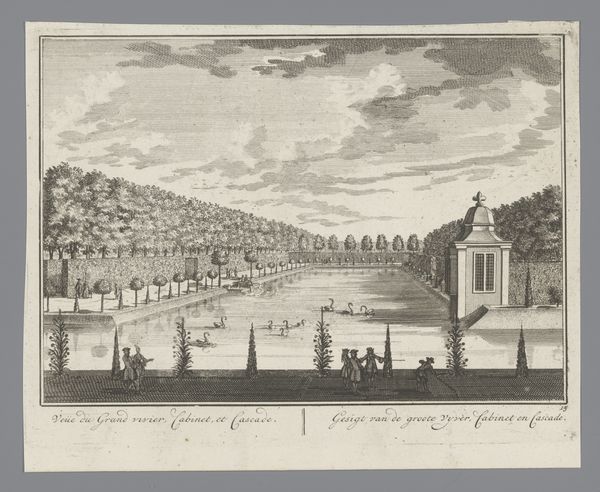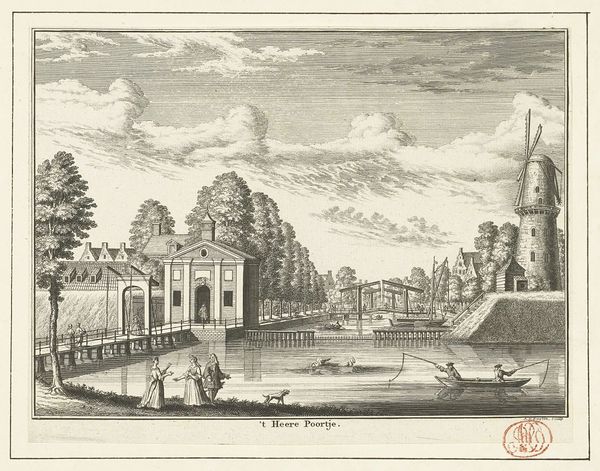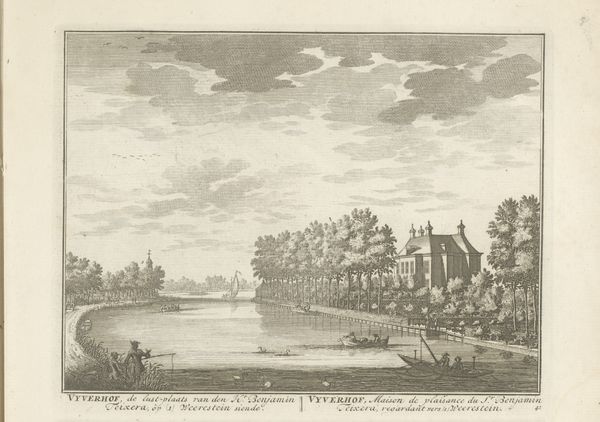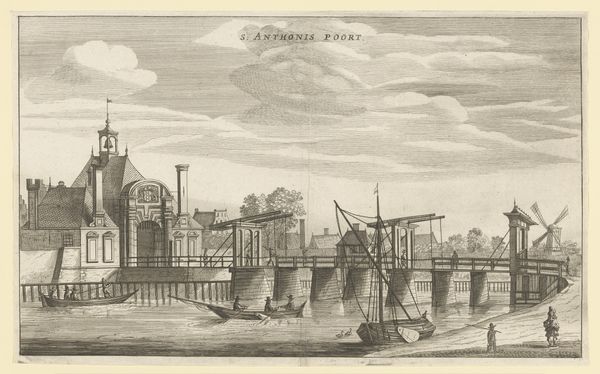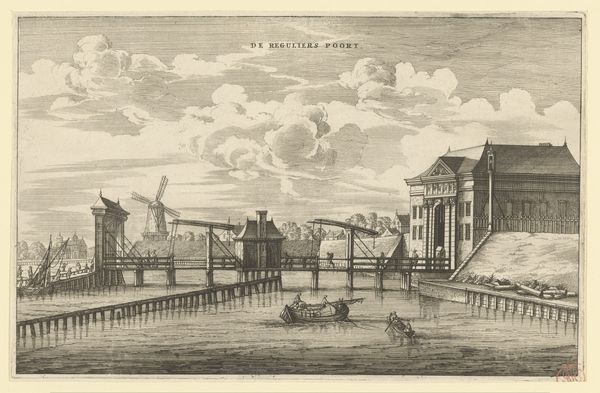
print, engraving
#
baroque
# print
#
pen sketch
#
french
#
old engraving style
#
landscape
#
cityscape
#
engraving
Dimensions: height 116 mm, width 179 mm
Copyright: Rijks Museum: Open Domain
Curator: Let's dive into this engraving, “Gezicht op Saint-Germain-en-Laye,” created by Israel Silvestre around 1655. Editor: It’s quite detailed! The perspective emphasizes the grandeur of the architecture. What stands out to you? Curator: The technique itself speaks volumes. Engraving as a medium – the laborious act of etching lines into a metal plate, wiping ink, and pressing it onto paper. It was a method of mass production, used to disseminate images and, in this case, ideals. Editor: Ideals? Like the Baroque obsession with order and control? Curator: Exactly! Consider the context: Louis XIV was centralizing power, transforming France. This print isn't just a landscape; it’s propaganda. The rigid gardens, the imposing château – they all signify absolute power rendered into material form. This kind of intense labor went into cultivating not just the grounds, but the monarchy's image. Editor: So, it's about the construction of an image, both literally through the engraving process and figuratively through the depiction of royal power? Curator: Precisely. Even the foreground figures, seemingly insignificant, highlight the controlled environment they occupy. Their scale is minimized against the dominating architectural structure, reinforcing the perceived strength of the state. Think about how access to these images functioned then – who saw them, and what was their purpose? Editor: It makes me wonder about the engraver, Silvestre. Was he conscious of participating in that power dynamic, or just fulfilling a commission? Curator: An important question! An artist's intentions and socio-economic situation at that time are relevant to understanding such cultural commissions. This piece challenges how we value artistry in contrast to commissioned labor. Editor: That perspective makes me see beyond just the aesthetics, into the world of labor and power that shaped its creation. Curator: Indeed, by analyzing the print's material origins, we gain a richer understanding of its cultural impact and enduring historical power.
Comments
No comments
Be the first to comment and join the conversation on the ultimate creative platform.
